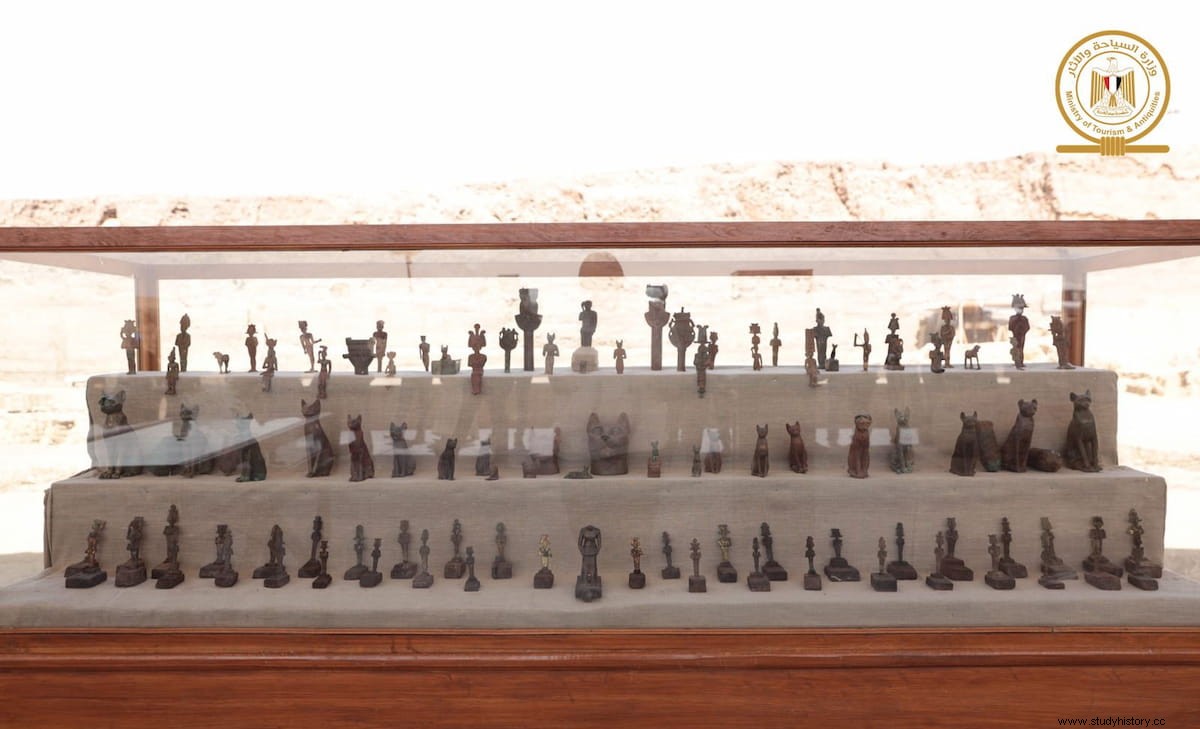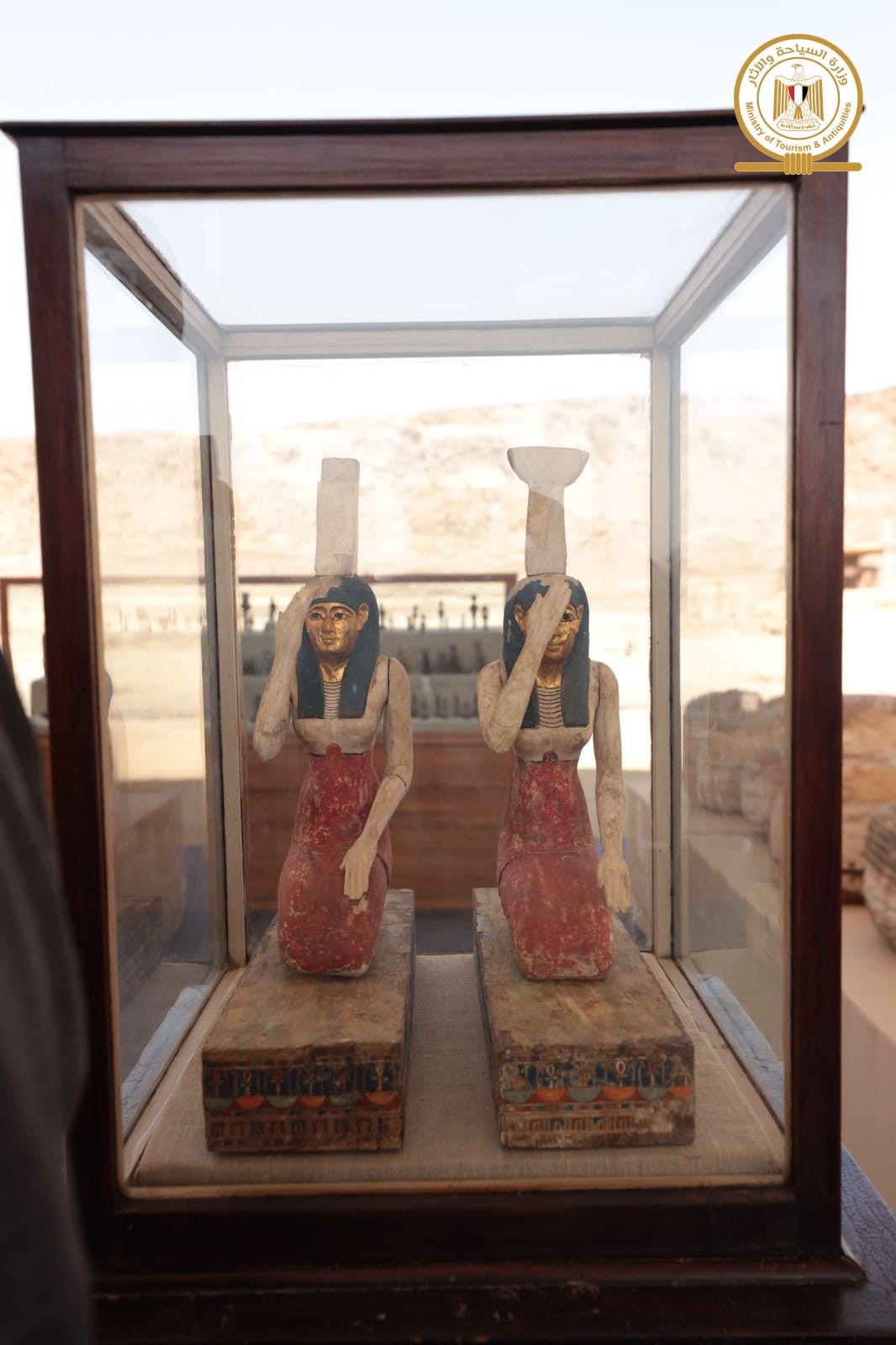The Egyptian archaeological mission that works in the necropolis of sacred animals of Saqqara managed to discover the largest set of statues and sarcophagi dating from the late period, during the work of the fourth season of excavations.
According to Dr. Mustafa Waziri, secretary general of the Supreme Council of Antiquities and head of the mission, the find includes 150 bronze statues of various sizes depicting various ancient Egyptian deities, including Anubis, Amun Min, Osiris, Isis, Nefertum , Bastet and Hathor.
Also found were a set of bronze vessels related to the rituals of the goddess Isis, a sistrum (a percussion instrument used in the rituals of Hathor and Isis), as well as a bronze statue of the engineer Imhotep whose head is missing. .

He added that the mission discovered a new group of burials in which 250 painted wooden sarcophagi from the late period, around 500 BC, were found closed and containing mummies in a good state of preservation. Some also contain amulets and wooden statues.
Archaeologists believe that one of the best-preserved sarcophagi may contain chapters from the Book of the Dead. For this reason, it was transferred to the restoration laboratories of the Egyptian Museum in Tahrir for sterilization, hydration, study and recognition of the texts it contains.

The mission also found two gilt-faced wooden statues of the goddesses Isis and Nephthys in mourning posture and a New Kingdom burial (circa 1500 BC) containing many ornaments and tools of daily life. like a bronze mirror and a group of bracelets, necklaces, earrings and anklets that have their own staples.

The Egyptian archaeological mission began its work on the site in 2018, when it managed to uncover the unique tomb of a Fifth Dynasty priest.
In addition, 7 rock tombs have been found at the site, including three tombs from the New Kingdom and four from the Old Kingdom, as well as more than a thousand faience amulets, dozens of statues and mummies of cats and other animals.

Saqqara was an important cult center where large numbers of mummified animals were produced for sale and later burial, as mummified animals were believed to act as intermediaries between the faithful and their gods.
In 2020, the mission also managed to uncover more than 100 closed wooden sarcophagi from the Late Period, 40 statues of the god Ptah, and 20 wooden sarcophagi of the god Horus.
